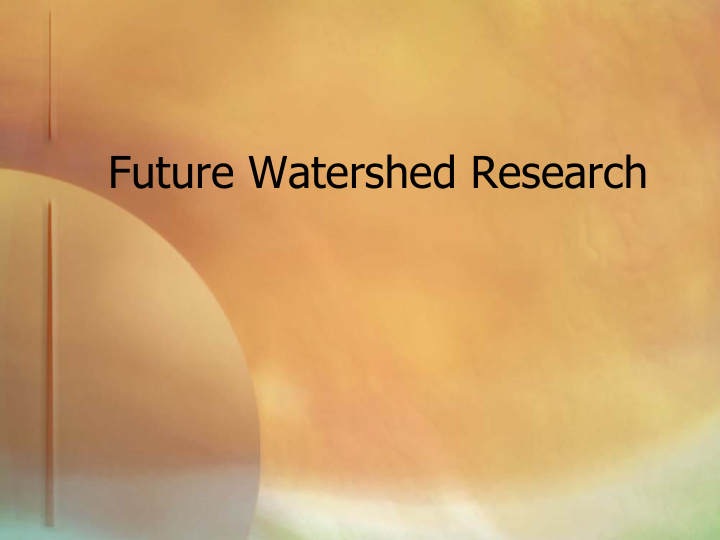



Future Watershed Research
Partnerships & Logistics • Field sampling large geographic areas is difficult. • Uniquely qualified to do this work. • Partnership with ADEQ.
Dynamism and Temporal Variability • Watersheds and water quality are not static. • Events happen. • Long-term data enables unique insight into how these watersheds function.
Algal Toxins • Continued monitoring next spring and summer. • Fish and zooplankton as coal mine canaries.
• Improved sampling methodology and preservation. • Preservation in biological samples. • Concentration with zooplankton nets.
Controlled Experiments • Axenic cultures of all suspect strains. • Check for toxicity individually. • Check for toxicity in mixed culture. • Check for environmental triggers. • Conduct bioassays. • Genetic link to toxin production.
• Only through a step-wise procedure can toxin production in the reservoirs be fully understood. • Only after unialgal cultures are established and environmental conditions leading to toxin production understood should the genetic link be established. • Only after the genetic link is established can a true early warning system be developed.
Sedimentation and Paleolimnology in Roosevelt • Transient and relatively short-term data makes it difficult to detect long- term trends in trophic state. • Land use influences on water quality are impossible to determine.
• Paleolimnological techniques are often used to assess water quality trends in lakes and reservoirs over time. • Incorporated in reservoir sediments is a record of organisms that lived around and in the reservoir, as well as proxy data related to lake processes, composition of reservoir water, watershed conditions, and climatological data.
Examples of Previous Studies • Climate patterns including the changing relationship between evaporation and precipitation (Rosenmeir et. al. 2002, Yu et. al. 2002, Teranes & McKenzie 2001). • -Changes in surface water temperature and salinity (Bloom et. al. 2003), • -Increases in trophic state (Shumate et. al. 2003), • -Increasing hypolimnetic anoxia associated with increasing primary production (Quinlan & Smol 2002, Itoh et. al. 2003), • -Estimation of past fire cycle, frequency, and interval (Davis et. al. 2001, Hallett & Walker 2002, Pisaric 2002, Philibert et. al. 2003), • -Vegetative changes and their impact on water quality (Rosenmeir et. al. 2002, Davis et. al. 2001).
• Sediment cores collected from Roosevelt will be age dateds using Pb210 and/or cesium-137 radionuclides. • The objectives pertain to quantifying long-term water quality trends in Roosevelt and the Salt River watershed, determining how these watershed determinants define water quality within the reservoir, and how aquatic biota respond to these water quality changes .
Analyte s • Fossilized pollen analysis . • Fossilized diatom frustules. • Fossilized chironomid head capsules. • Charcoal analysis. • Nutrients and heavy metals.
Benefits • A better understanding of how the watershed has responded to past episodic events such as wildfire. • Aid in determining biocriteria for reservoirs within the state. • Assessment of long-term climatic trends and their effect on water quality.
Environmental Modeling • Using our existing database to make predictions about long-term water quality trends. • Either separate, or establishment of new, models would have to be used.
• Hydrologic in reservoirs. • Hydrologic in watershed. • Chemical in reservoir and watershed • Biological in reservoirs and watershed .
SPARROW (Spatially Referenced Regressions on Watershed Attributes) • Relates in-stream water-quality measurements to spatially referenced characteristics of watersheds. • Including contaminant sources and factors influencing terrestrial and stream transport .
• The model empirically estimates the origin and fate of contaminants in streams, and quantifies uncertainties in these estimates based on model coefficient error and unexplained variability in the observed data .
• Combination of models would have to be used in river-reservoir systems.
Questions and Discussion
Recommend
More recommend